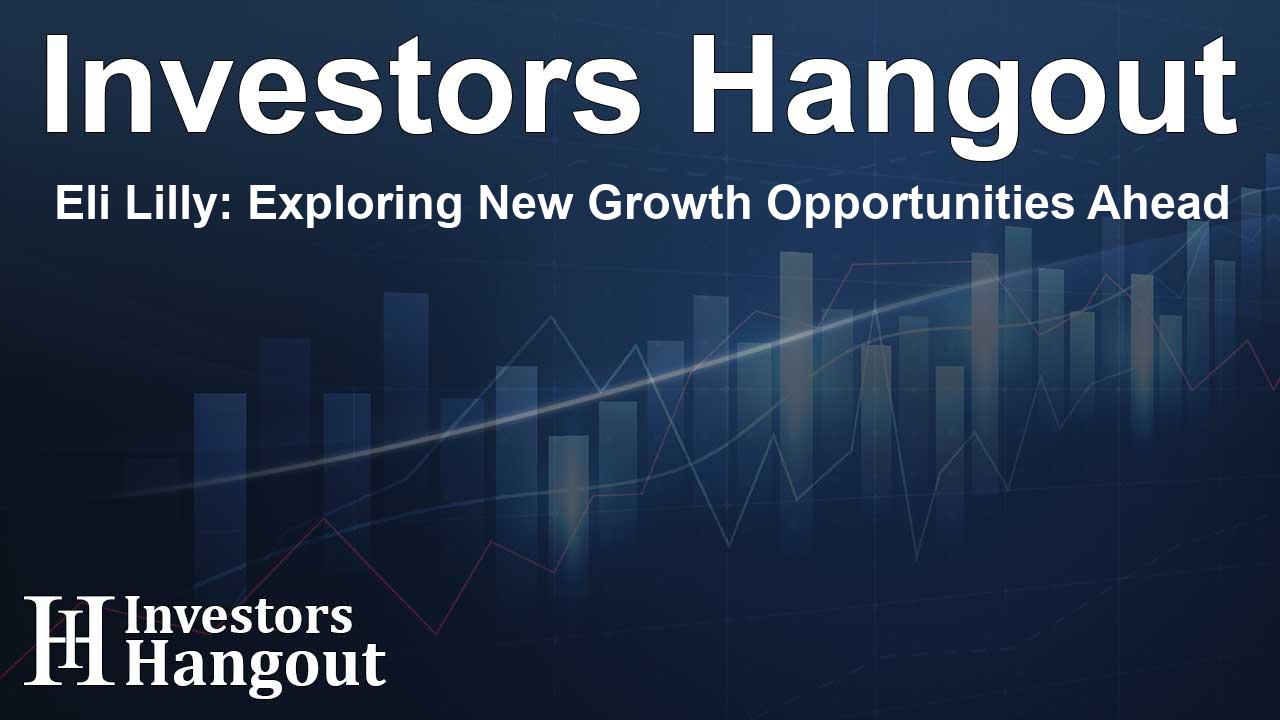Eli Lilly: Exploring New Growth Opportunities Ahead

Insights on Eli Lilly's Growth Potential
A few months ago, I listened to a fascinating conversation between Joe Lonsdale, co-founder of Palantir, and Ken Langone, co-founder of Home Depot. Their discussion revolved around investment philosophies that often take unexpected turns. Langone, known primarily for his role in the home improvement sector, also revealed his significant interests in various other ventures, most notably in the pharmaceutical industry.
His long-term association with Eli Lilly (NYSE: LLY) caught my attention. After Lilly acquired a medical device company that Langone had been involved with decades ago, he became a notable shareholder in the company. Some say that he may be one of the largest individual shareholders of Eli Lilly, but he remains coy about that status.
What’s crystal clear is that Eli Lilly has created generational wealth for many investors over the years. Since 1972, it has experienced a staggering total return of 100,203%, a feat very few companies can boast of in such a competitive market.
With a promising future ahead, let’s break down three exciting catalysts propelling Eli Lilly and its position in the pharmaceutical industry.
1. The Ongoing GLP-1 Revolution
Currently, the pharmaceutical landscape is buzzing with the GLP-1 (glucagon-like peptide-1) therapeutics, which focus on weight management and treating diabetes. Blockbuster drugs like Ozempic, Wegovy, and Mounjaro are leading the charge in this booming sector. While Novo Nordisk currently leads the market with a robust portfolio, Eli Lilly is not far behind, with its innovative offerings like Mounjaro and Zepbound showing great promise.
Recent reports indicate that the global market for GLP-1 treatments was valued at around $36.8 billion in 2023, with a projected growth rate of 21.6% from 2024 to 2030. Analysts see this market exceeding $100 billion by 2030, with a significant portion of the U.S. population potentially utilizing GLP-1 medications in the coming years.
Moreover, the potential to treat various conditions using GLP-1 drugs is gaining traction. Eli Lilly is exploring indications that extend beyond weight management, which could open new doors for the company in the near future.
2. The Alzheimer’s Market Expansion
This summer, Eli Lilly made headlines when its Alzheimer’s drug, donanemab, received FDA approval, presenting another bright opportunity for investors. The global market for Alzheimer’s therapeutics is currently worth approximately $6.5 billion, but forecasts suggest it may reach $31 billion by the end of the decade, growing at an annual rate of about 19%.
While the immediate impact of donanemab may take time to reflect in Eli Lilly’s growth, the competitive landscape is relatively sparse compared to other drug categories, positioning the company well for future growth amid rising demand.
3. Leveraging Artificial Intelligence in Healthcare
One of the most exciting avenues Eli Lilly is exploring is the integration of artificial intelligence into the healthcare sector. Collaborating with OpenAI, Lilly aims to develop new antimicrobial medications to combat drug-resistant infections, a critical health concern affecting millions worldwide.
The World Bank has warned that the rising costs associated with antimicrobial resistance could hit $1 trillion by 2050, alongside a dramatic impact on global GDP. Eli Lilly's forward-thinking approach shows its commitment to innovating and addressing ongoing challenges within healthcare.
Is Eli Lilly Worth Your Investment?
As you contemplate potential stock purchases, keep in mind Eli Lilly's impressive history and its future growth strategies. The company is tackling two high-potential markets in GLP-1 therapies and Alzheimer's treatments, while simultaneously venturing into innovative solutions powered by AI technologies.
Ultimately, Eli Lilly's proactive initiatives and market positioning are indicative of its strong potential in the pharmaceutical landscape.
Frequently Asked Questions
What drives Eli Lilly's stock growth?
Eli Lilly's stock growth is primarily driven by successful product launches, strong returns on investments, and expanding into high-potential markets like GLP-1 therapies and Alzheimer's treatments.
How has Eli Lilly performed historically?
Since 1972, Eli Lilly has delivered impressive total returns of 100,203%, showcasing its resilience and ability to generate wealth for investors.
What is the GLP-1 market outlook?
The GLP-1 market is projected to reach over $100 billion by 2030, showing strong growth potential for companies involved, including Eli Lilly.
How does AI impact Eli Lilly's operations?
AI is being utilized by Eli Lilly to improve drug development processes and tackle complex health challenges, particularly in antimicrobial resistance.
Should I invest in Eli Lilly now?
Investors should consider Eli Lilly's innovative strategies and growth potential. However, as with any investment decision, research and analysis are crucial before proceeding.
About Investors Hangout
Investors Hangout is a leading online stock forum for financial discussion and learning, offering a wide range of free tools and resources. It draws in traders of all levels, who exchange market knowledge, investigate trading tactics, and keep an eye on industry developments in real time. Featuring financial articles, stock message boards, quotes, charts, company profiles, and live news updates. Through cooperative learning and a wealth of informational resources, it helps users from novices creating their first portfolios to experts honing their techniques. Join Investors Hangout today: https://investorshangout.com/
Disclaimer: The content of this article is solely for general informational purposes only; it does not represent legal, financial, or investment advice. Investors Hangout does not offer financial advice; the author is not a licensed financial advisor. Consult a qualified advisor before making any financial or investment decisions based on this article. The author's interpretation of publicly available data shapes the opinions presented here; as a result, they should not be taken as advice to purchase, sell, or hold any securities mentioned or any other investments. The author does not guarantee the accuracy, completeness, or timeliness of any material, providing it "as is." Information and market conditions may change; past performance is not indicative of future outcomes. If any of the material offered here is inaccurate, please contact us for corrections.